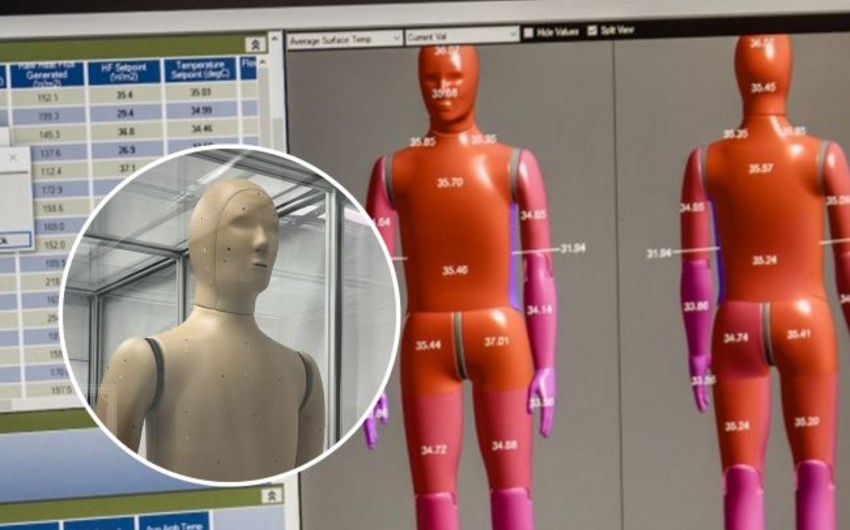Scientists at Arizona State University (ASU) have achieved a significant milestone by developing the world’s first robot that exhibits human-like behaviors such as breathing, sweating, and shivering, Report informs referring to SAMAA.
The robot, called ANDI, is a redesigned walking manikin aimed at studying the human body’s response to heatwaves.
Funded by an NSF Major Research Instrumentation Grant and custom-built by Thermetrics, ANDI is equipped with advanced features.
It boasts 35 individually controlled temperature sensors, heat flux sensors, and pores that produce sweat, allowing it to simulate various human bodily functions.
Principal investigator Konrad Rykaczewski explained that ANDI can generate heat, shiver, walk, and breathe, providing valuable insights into the impact of heat on the human body.
The development of ANDI is crucial because testing extreme heat scenarios on humans would be both unethical and dangerous.
Jenni Vanos, an associate professor at ASU’s School of Sustainability, emphasized that although people are known to die from heat-related causes, the exact factors contributing to these fatalities are not fully understood.
ANDI’s capabilities can help researchers uncover the complexities of heat stress and shed light on the underlying causes.
ANDI’s uniqueness lies in its ability to operate outdoors, thanks to an internal cooling channel.
This breakthrough enables researchers to study the reasons behind heat stress and the potential fatality associated with extremely hot weather.
Currently, there are 10 ANDI manikins worldwide, with some owned by athletic clothing companies for garment testing. ASU’s ANDI is one of two models primarily used by research institutions.
Excitingly, ANDI will be paired with ASU’s biometeorological heat robot, MaRTy, to further enhance the understanding of human sweating mechanisms.
MaRTy measures environmental factors, while ANDI provides insights into how the body responds internally.
By combining their capabilities, researchers hope to gain a comprehensive understanding of how the built environment influences heat on the body.
Ankit Joshi, the lead operator of ANDI and an ASU research scientist, highlighted the flexibility of the system.
Different models representing varying body mass indexes (BMIs), age characteristics, and medical conditions can be incorporated into ANDI’s simulations.
This allows researchers to account for the thermal regulation differences between individuals, such as those with diabetes.
The development of ANDI marks a significant milestone in robotics and thermal research.
Its unique capabilities pave the way for further advancements in understanding the human body’s response to heat and designing effective interventions to mitigate heat-related risks.


 https://images.report.az/photo/5da41958-d062-3849-971c-f3c7b0811292.jpg
https://images.report.az/photo/5da41958-d062-3849-971c-f3c7b0811292.jpg

